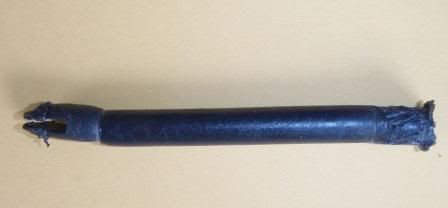chrisj wrote:
I guess that leads to the questions:
- Why cleat at all? (Obviously because the rudder keeps popping up)
- Could the boat be damaged using a steel pin if the rudder wasn't cleated?
- Is the rudder subject to extreme lateral forces which are not relieved by the rudder popping up?
1. I generally don't cleat the rudder. It seldom pops up.
2. Yes, you could wind up with a cracked hull.
3. Yes, on the day my wife broke two pins, there was a lot of very confused chop. It was large enough to swing our boats about a fair amount, maybe as much as 15-20 degrees. The boats can kind of pivot if on top of a bit of steep chop with bow and stern more or less clear of the water. One of my theories is that she was trying harder to correct for those swings, while I just let it happen and let the boat regain control of itself. Another of my theories is that even if she did not do that, her rudder may have come down into the water going sideways pretty fast. Yet another theory is that she was trying to turn the rudder during one of these sideways entries, and the hinge bound up and the pins got twisted off.
Ron,
I do not believe that she hit something without seeing or feeling it, then went right back out and hit another object, again without seeing or feeling it.







